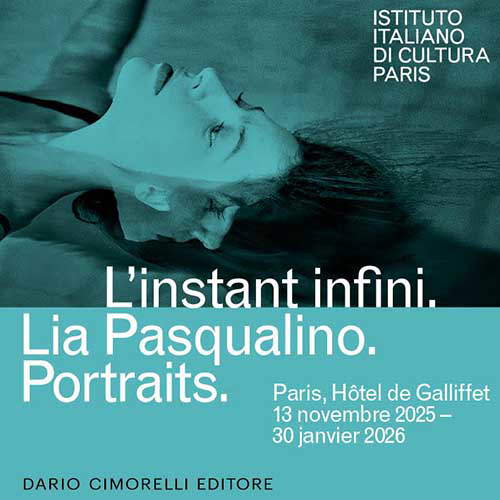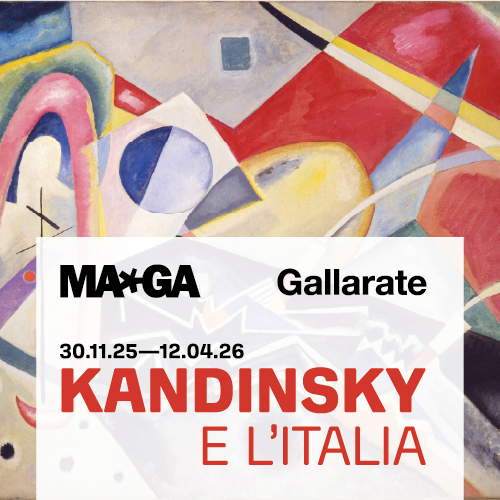
The Rotunda of Rovigo, the shrine that became a mirror of Venetian power
Founded as a Marian shrine, the Rotonda of Rovigo became a sumptuous civic temple in the 17th century, a mirror of Venetian power. Amid Baroque canvases and glorifications of Venetian podestas, the church recounts the encounter between faith and politics, between popular devotion and the self-celebration of the Serenissima. A new article in Federico Giannini's "The ways of silence" column.
By Federico Giannini | 26/10/2025 13:45
Those who arrive at the Rovigo Rotunda from the most beautiful and most convenient street, the one leading to the long square opened in 1864, are in danger of being fooled: a lawn, pines, two wings of cobblestones and two rows of colorful houses that accompany you in front of what you think is the front of the large octagonal temple. Actually, the front is two sides further to the left. And it gives onto the less interesting street. The monumental entrance stands there, however, and it is by entering from there that you find yourself with thealtar before your eyes, and everywhere, on the walls, the canvases that cover all eight sides of the church, the niches with the statues of the saints, the large windows through which daylight enters for everywhere, and high up on the ceiling, the image of the Blessed Virgin of Relief, to whom the church is dedicated.
One feels overwhelmed, inundated. If you arrive at the Rotonda after seeing Giovanni Biasin's great Panorama in Palazzo Roverella, the enveloping view of Venice hung on the walls to give the relative the feeling of being there, on the water of St. Mark's basin, then those twenty-two meters of paper will seem like a game, or at most a kind of antechamber. Here, inside this church, there is no illusion of being somewhere else, no awareness of witnessing a kind of spectacle created especially to astound, and perhaps there is not even the interest of knowing who the painters are who covered all the walls of this church. And the list would be long, since there is all the best of seventeenth-century Venetian painting: there was no great artist of Baroque Venice who shunned the idea of giving one of his paintings to the Rotunda of Rovigo. You don't care about the figures, you don't care about those swirls of air and clouds, that fluttering of fabrics and brocades, that exorbitance of skies and golden glow, those tangles of angel bodies, all the stuff that would be enough to bend the most refractory soul to wonder. You are not even interested in the generalities of the painters that, unconcernedly, you read on the panels when you pass by, without going to look them up: the names of Pietro della Vecchia, Pietro Ricchi, Pietro Liberi, Gregorio Lazzarini, Francesco Maffei, Andrea Celesti, Antonio Zanchi, even two stars of the great Tuscan Baroque decoration, Giovanni Coli and Filippo Gherardi, who worked together in Venice for a few years, and many others perhaps of lesser fame, but certainly of great craft, scroll by. Of course: not that outside the circle of the initiated the names of a Ricchi or a Maffei move to excitement, but there is certainly enough material inside the Rotonda to compose a sort of sampler of the great Venetian painting of the time.
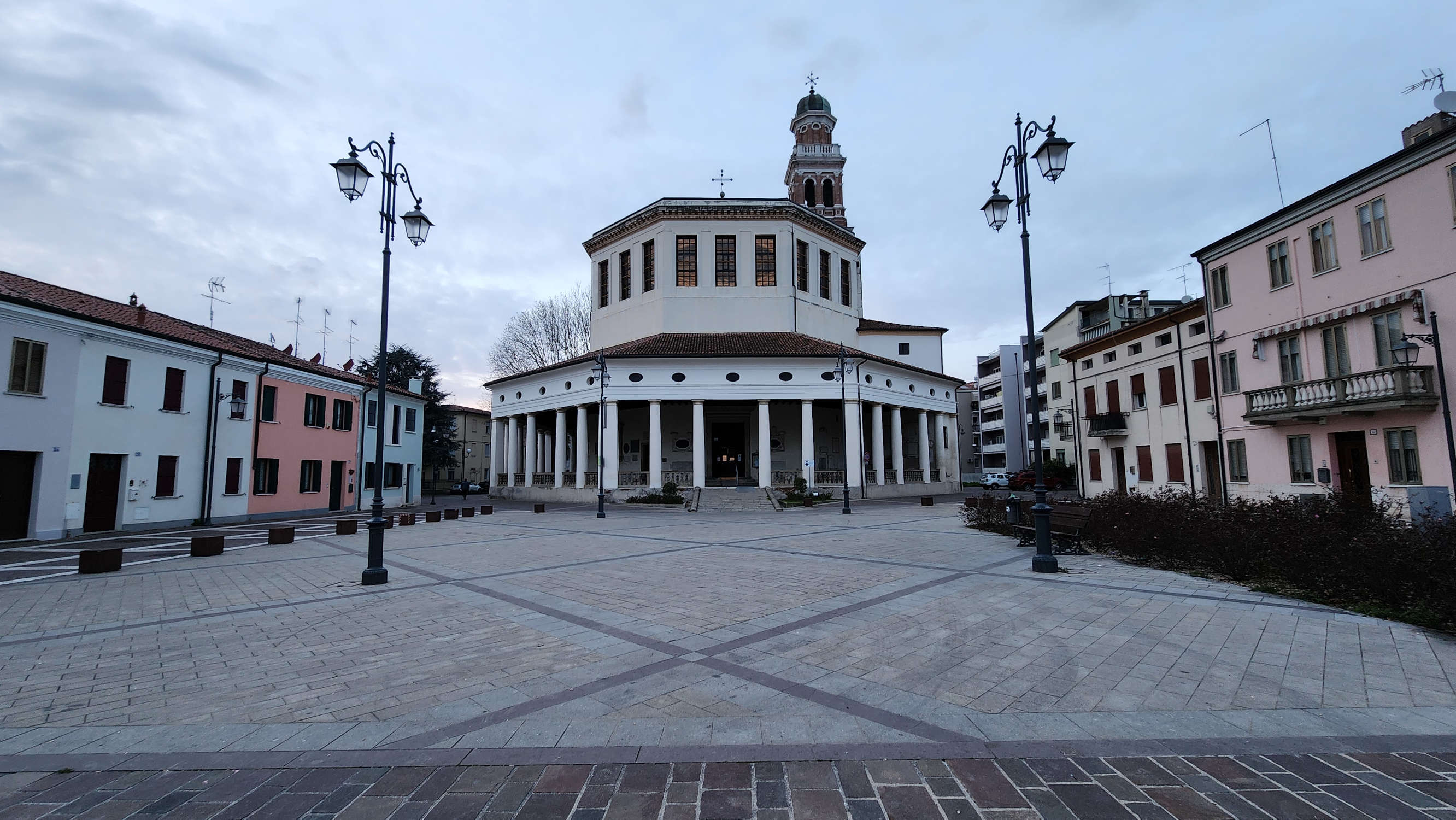
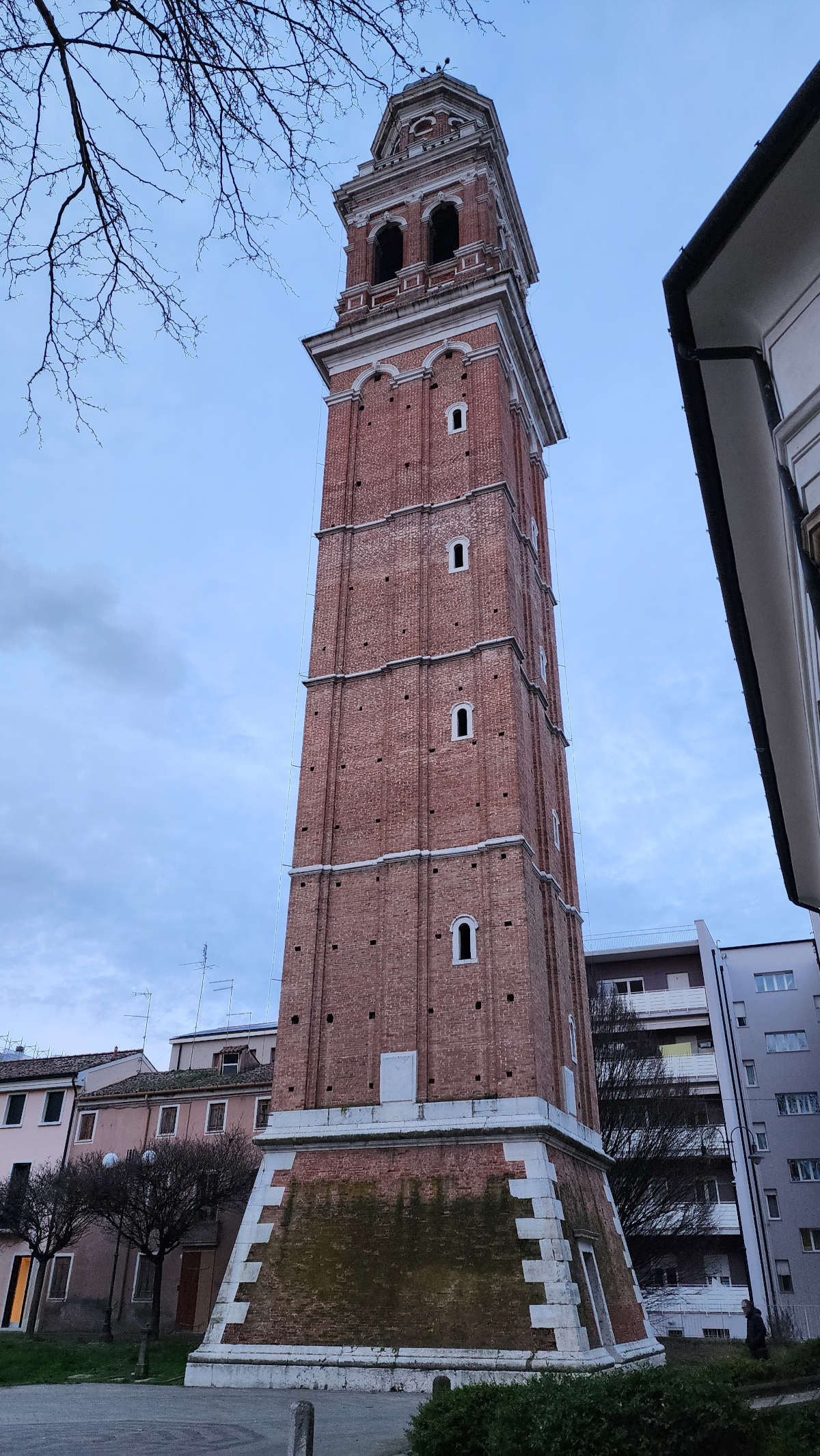
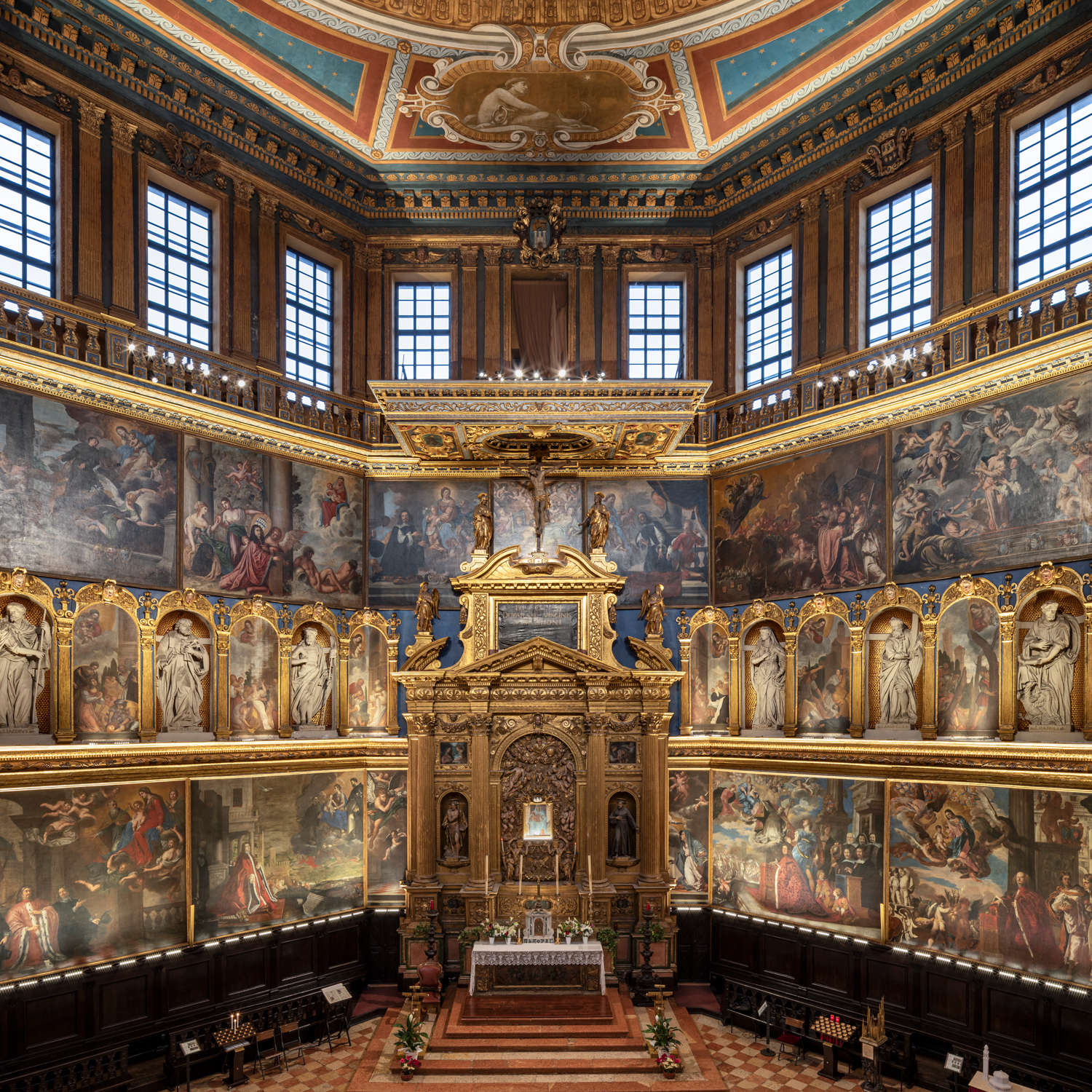
All the more reason, then, names are of little or no interest. It makes you think that the Virgin and the saints probably never dealt with politics, but the impression is that of attending an assembly where the sacred is a justification, a pretext, an enormous radiant scenography, of taking part in a conscious staging, in which the divine apparatus concurs, in one place, to the exaltation of an earthly apparatus. They run, along the bands that circle all eight sides of the temple, episodes from scripture mixed with scenes celebrating the podestà of Rovigo, the local administrators who led the city at the time, chosen from the patriciate of the Republic of Venice of which Rovigo was a part and elected by the Maggior Consiglio della Serenissima. They were something more than mayors: the podestà, who held office for twelve months, not only administered Rovigo, but were also the general superintendents of the entire Polesine, were the holders of judicial power over the lands they governed, and also presided over the government of the waters, a task that, in a land of river, sea and marsh, was certainly among the most delicate. No wonder, perhaps, that their presence in here is so insistent: in the lower band, the eight stories of the Virgin alternate with as many glorifications of podestà, and in the middle band, twenty saints, modeled in stucco by the Como sculptor Davide Arrieti in 1627, guide the eye to the upper band, all filled, except for a single telero, with the celebrations of the governors of Rovigo: twelve podestà and four provveditori. Finally, on the ceiling decorating the dome is the 1887 fresco of a miracle of the Madonna del Soccorso, the work of Vittorio Bressanin.
Perhaps there is not a single place in the whole of the Veneto, outside the Doge's Palace in Venice, that celebrates with such obstinate perseverance, such overwhelming splendor, such ostentatious pride the administration of the Serenissima, with those mayors wrapped in their ermines, in their porpoises, almost mediators between heaven and earth, presented to Our Lady now by virtues, now by angels, as it is for podestà Bertuccio Civran, who in one of Maffei's canvases is accompanied, under the column of a classical temple, by charity and humility, a singular paradox, or as it isit is for Bartolomeo Querini, in the darkest and gloomiest of the Rotonda paintings, where Pietro Ricchi imagines the city of Rovigo itself, dressed in mourning, leading the podestà. The cycle of canvases appears to us as if it had been painted all at once, because it moves as a single piece, because it responds in all likelihood to a precise decorative program, a program of exaltation of the city and, perhaps even more so, of its capital, but the canvases of the Rotunda took almost sixtyyears to be completed, and by the end of the work the sanctuary dedicated to the Madonna del Soccorso had become a large, splendid civic temple, perhaps even disproportionate to the size of a city that nevertheless, although certainly not the largest in the Serenissima, was a significant and prosperous border town, the capital of a territory that had also been affected, at the beginning of the seventeenth century, by a strong demographic growth. It is not surprising then that at some point in history someone must have thought it best to transform the shrine of the Blessed Virgin Mary of Succor into a kind of town hall bathed in sacred light.
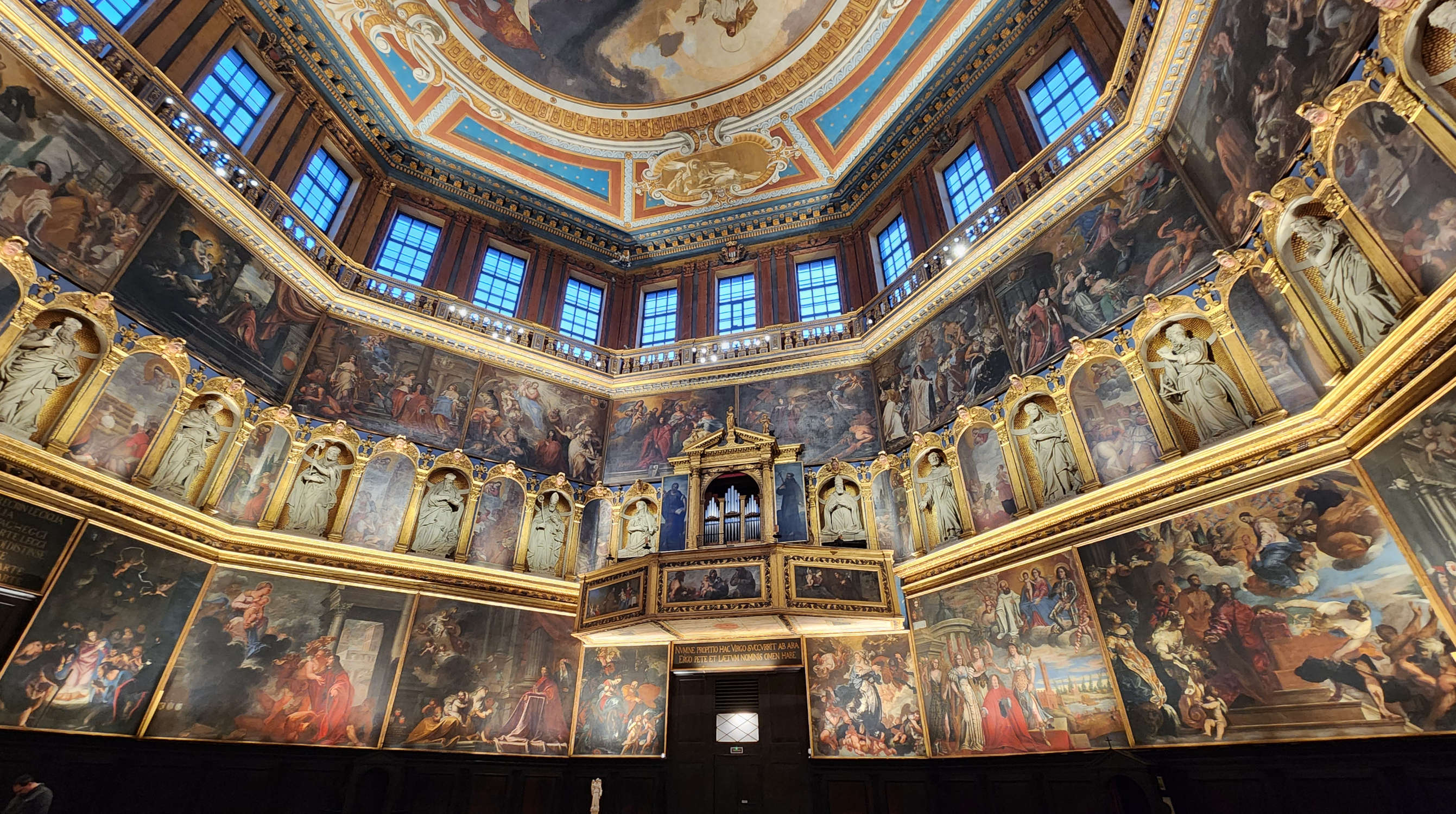
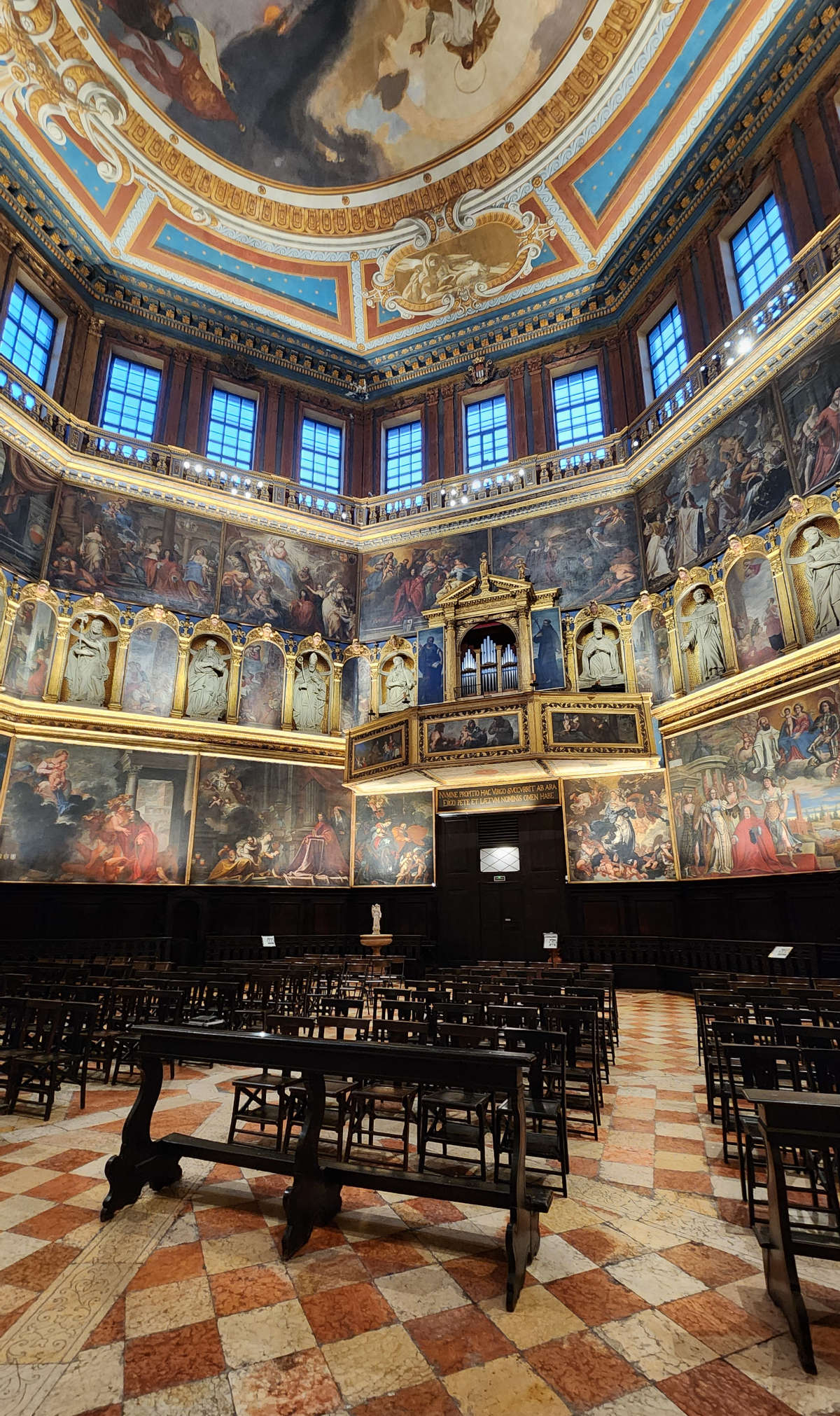
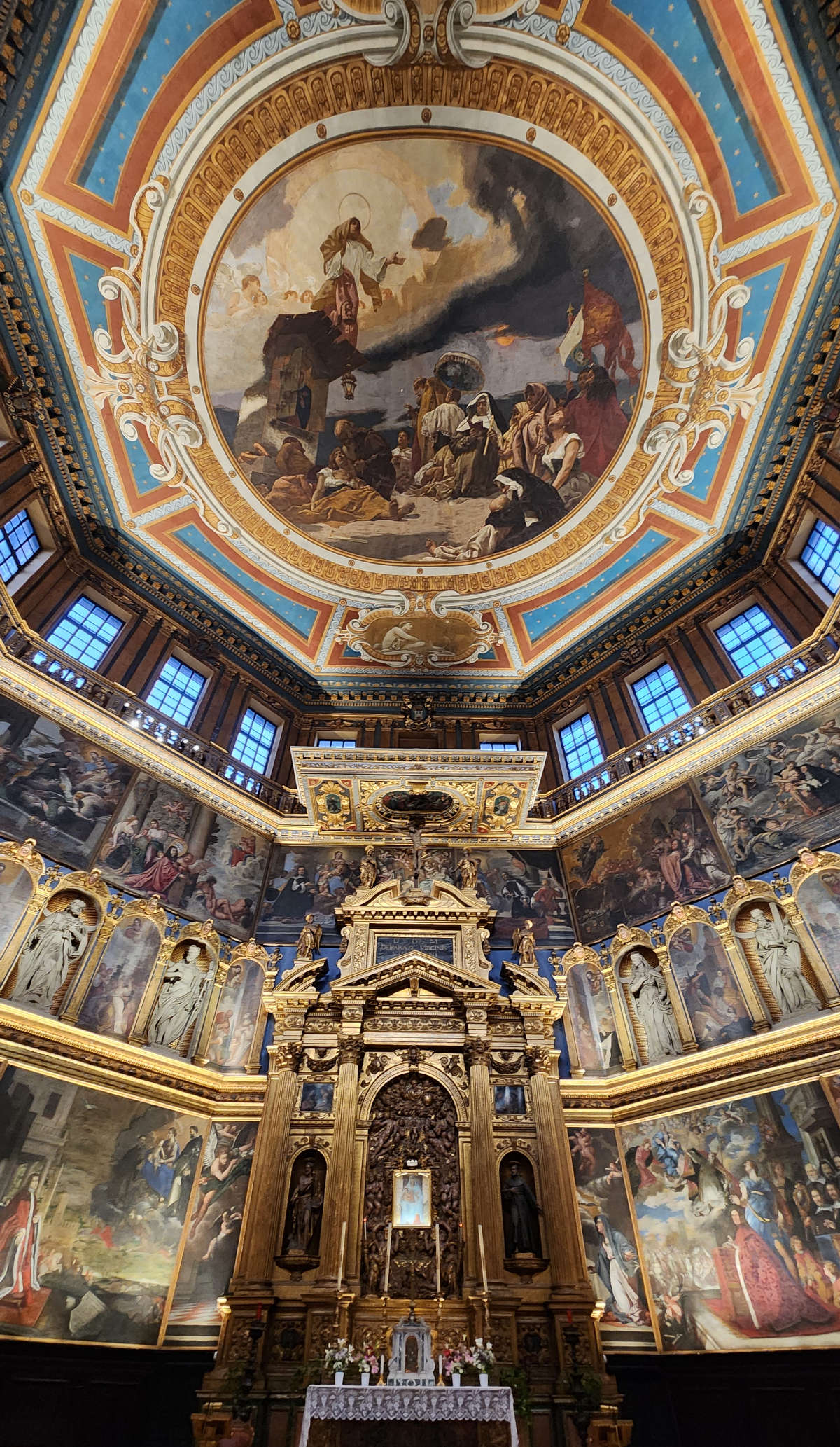
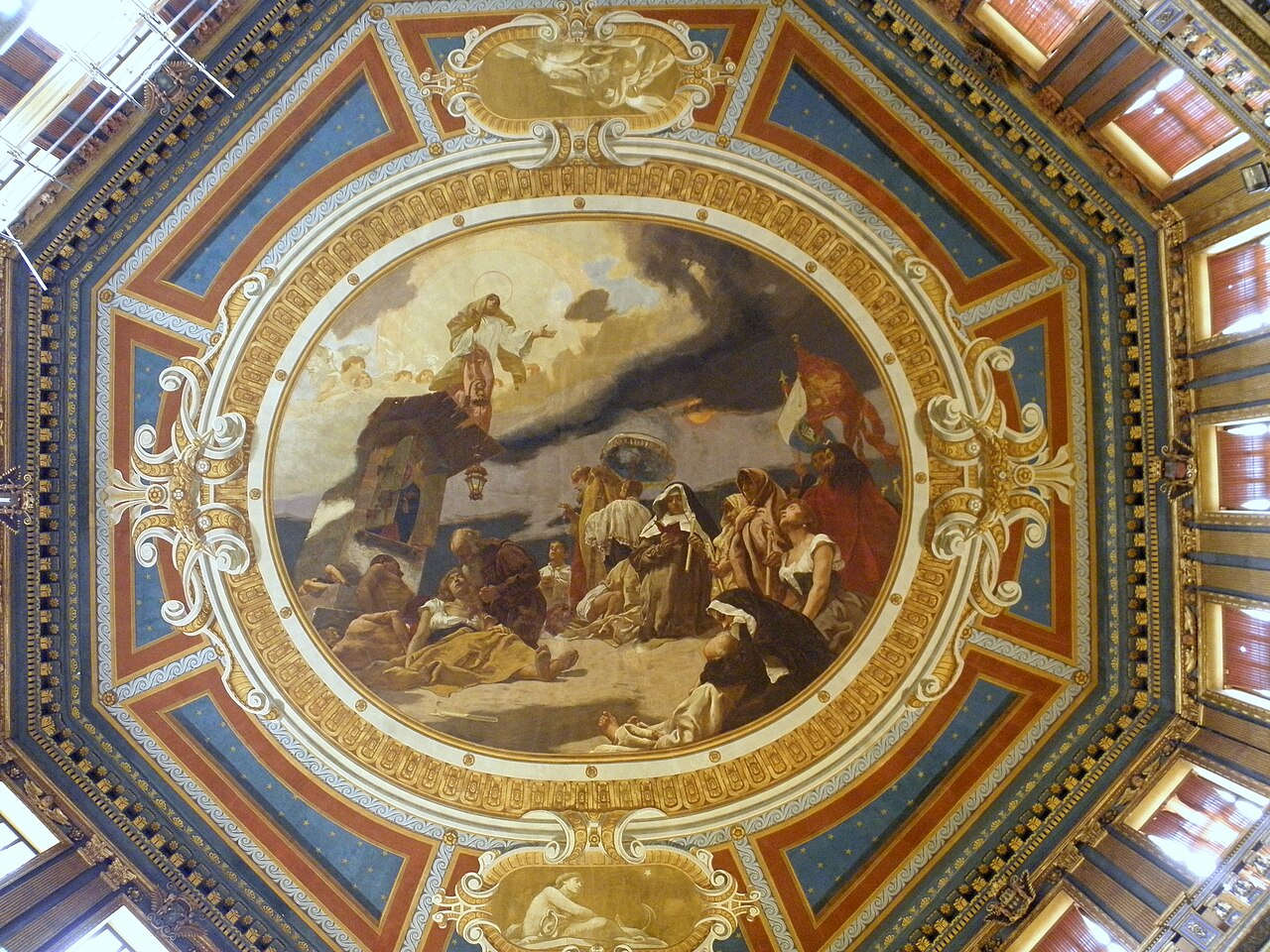
The church had been built some time before the city made this decision. Its history, at first, is identical to that of hundreds of other holy places: there is a community that is strongly attached to a painting depicting Our Lady because it considers it miraculous, and at some point, usually in conjunction with a particularly heartfelt miracle (in our case, the successful overcoming of'a plague), the community decides that the oratory where it had hitherto venerated that image is no longer fit for purpose. We say generically "community" because, in the case of the Rotunda, we are not sure whether the major impetus had come from the city authorities, the bishop or the Franciscans who managed the previous oratory, and who would also manage the new church. The fact is that at the end of the sixteenth century the architect Francesco Zamberlan, a friend and collaborator of Palladio, was commissioned to design a new temple, paid for with public resources and with the help of donations from private citizens of Rovigo, which, moreover, proved to be decidedly generous. The foundation stone was laid on October 13, 1594, and twelve years later the building was finished (only the bell tower, designed by the greatest Venetian architect of the seventeenth century, Baldassarre Longhena, is later: it was begun in 1655, and finished as late as 1773). The church is located in a decentralized area, attached to the city walls, in a sparsely built-up area, which therefore allowed Zamberlan to opt for a temple with a central plan, a choice that is, moreover, rare for a Renaissance church in the Veneto and with few other comparisons, and of considerable size. On the outside, the octagonal body is surrounded by a large portico supported by columns of Tuscanic order, soaring above a podium. The exterior is also deceptive because it is extremely regular, moderate, balanced, sober: the work of an engineer, presumably moved by humanist ideals, eager to celebrate harmony, rationality, the dominance of the human being who wants to give order to things. Inside, everything changes: Franco Barbieri, a recognized scholar of architecture, noted how, inside, the visitor feels overwhelmed by the cascade of gilding, paintings, and figures flowing around and over his head. We do not know if this was the intention from the beginning, but certainly, at the moment when, at the end of a dispute (it will be necessary to take into account that we are at the time of the persecution against Paolo Sarpi, at the time of the bitter conflict between the Serenissima and the Church, at the time of Paul V's interdict against the Republic of Venice), the city of Rovigo obtained title to the church thus guaranteeing itself the power to transform it into the civic temple it has become, evidently the authorities had to establish a program that we see today all along the more than two thousand square meters of walls that surround the faithful when they look into the face of the wooden altar, carved in 1607 by a local artist, Giovanni Caracchio.
There was probably from the very beginning, or almost from the very beginning, an intention to convert the sanctuary into a singular mausoleum of Rovigo's glories, but in all likelihood there must have been a lack of unique direction, however much the governments that administered Rovigo for almost all of the seventeenth century labored to give a certain aesthetic continuity to the entire decorative apparatus: it should be emphasized that the works were donated or paid for by the individuals who commissioned them, which is why, moreover, it is not even easy to find precise documents that would allow the history of this painted cycle to be reconstructed in detail. No harm done: the absence of information does not prevent one from grasping the unity of a program that appears predetermined, although it was then filled in episodically, with a trickle of canvases, donated by the podestas when their term of office ended, more out of self-celebration and custom than out of sincere devotion, which would continue almost to the threshold of the eighteenth century. It was, summed up Vittorio Sgarbi, who has long studied the Rotunda of Rovigo, "a place of Marian devotion in which the Venetian Republic, above all, was celebrated."
.
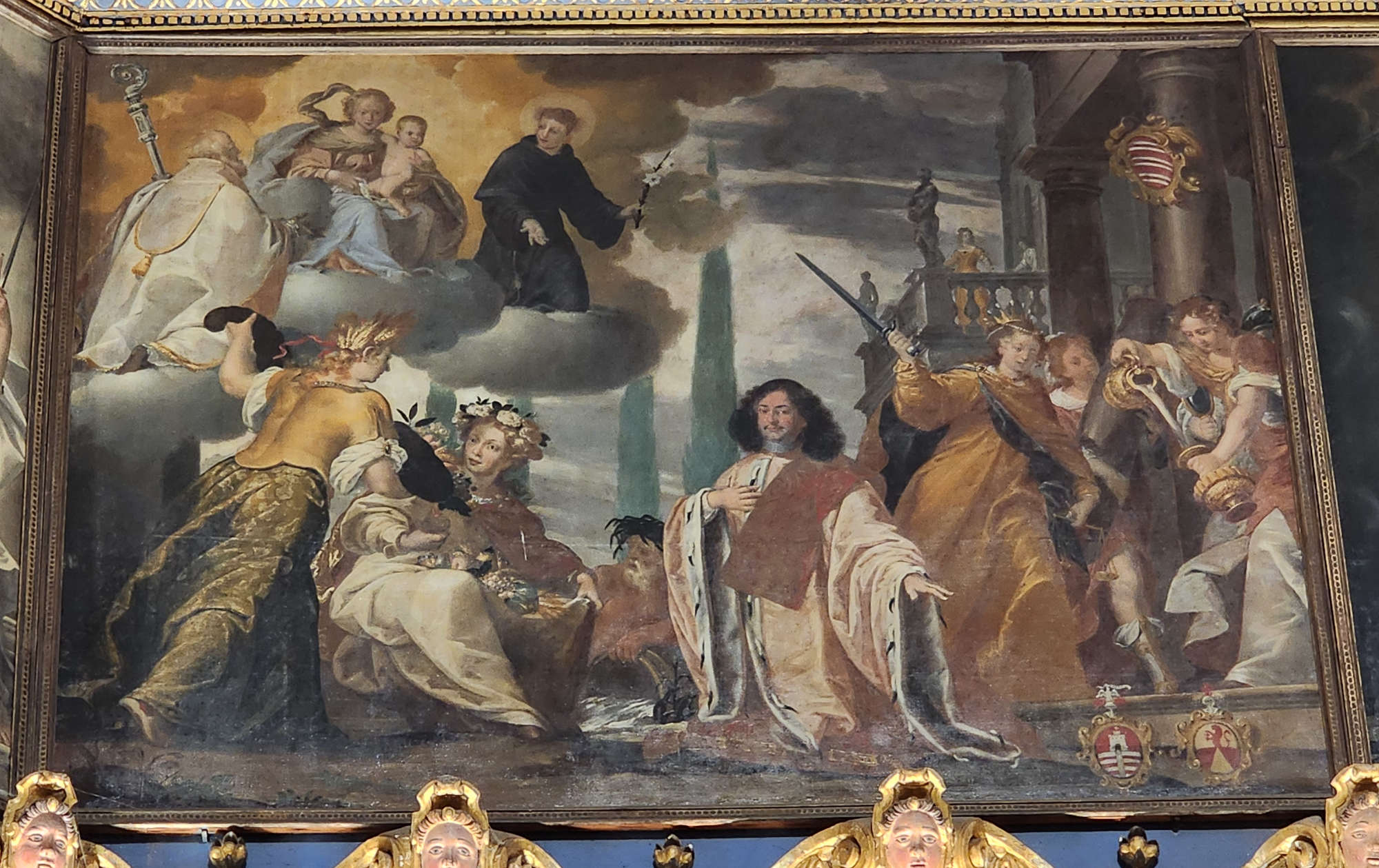
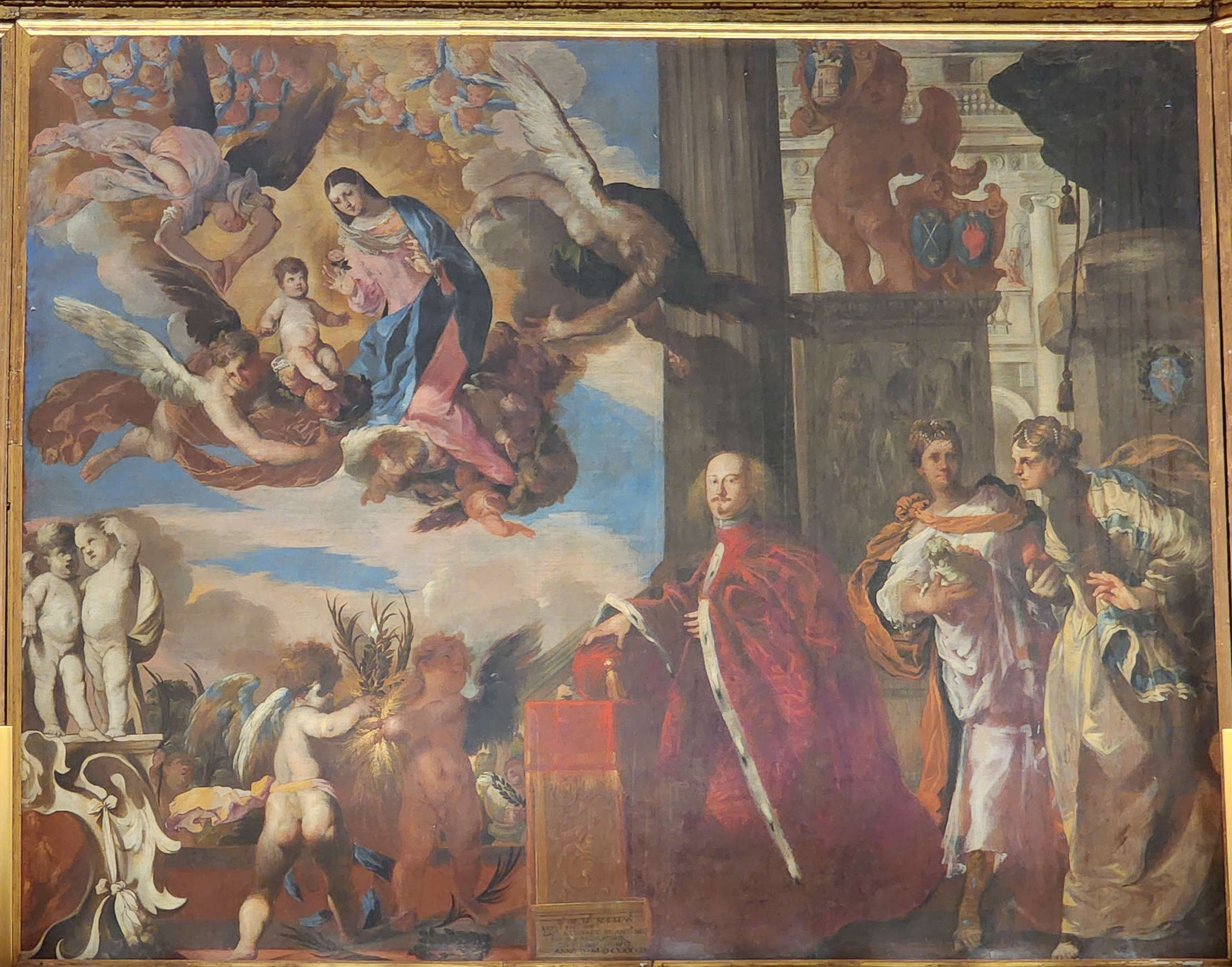
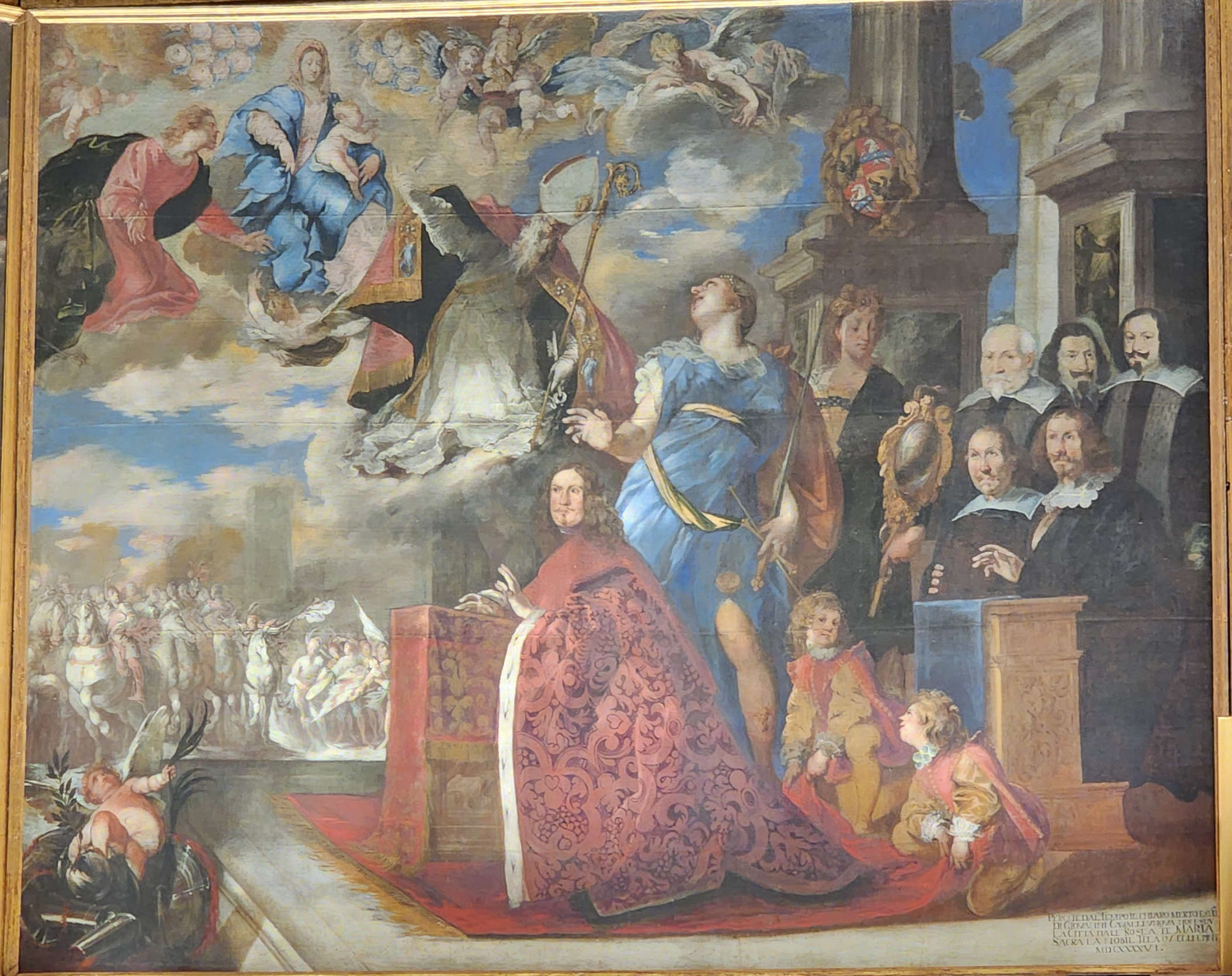
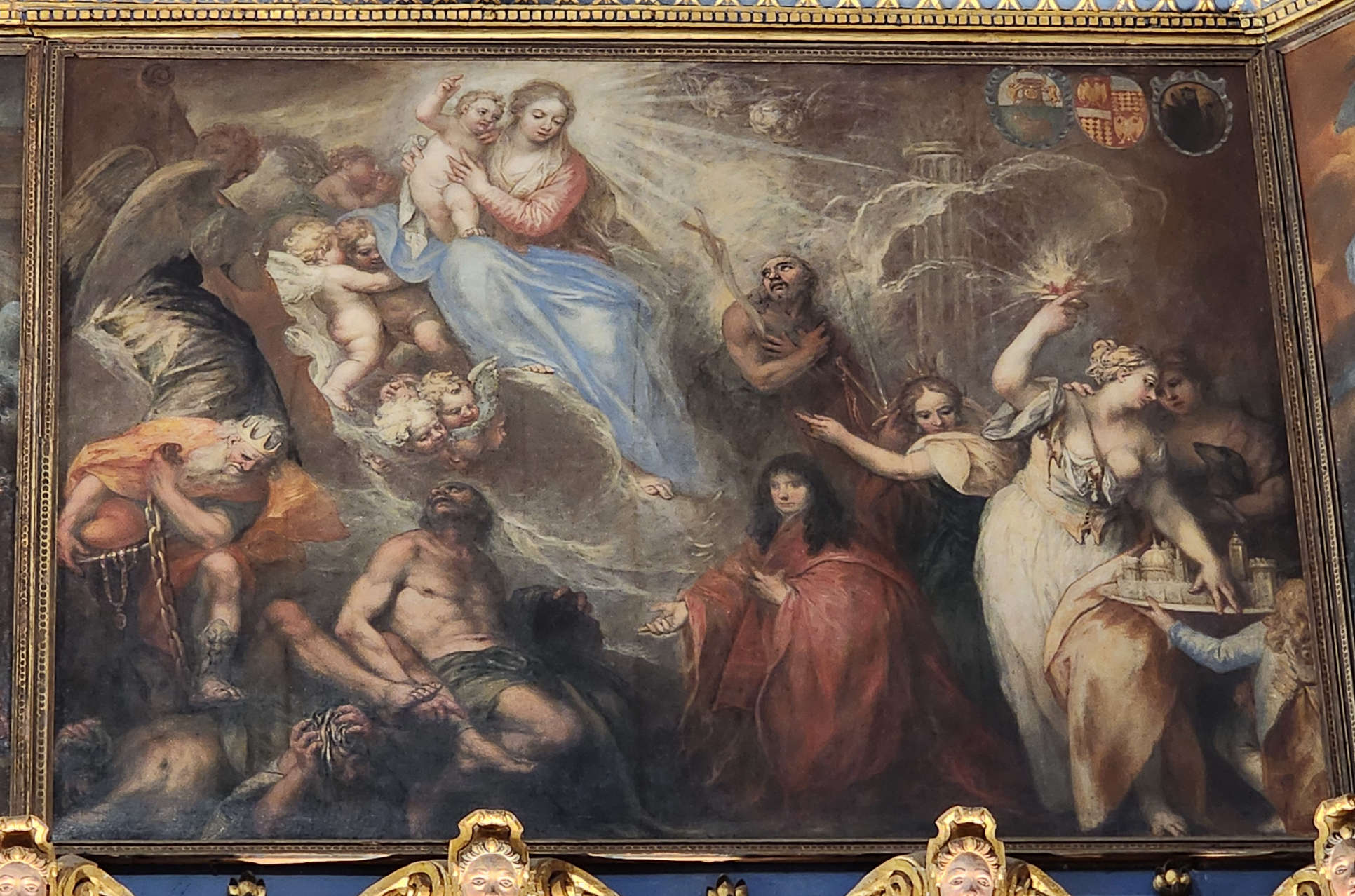
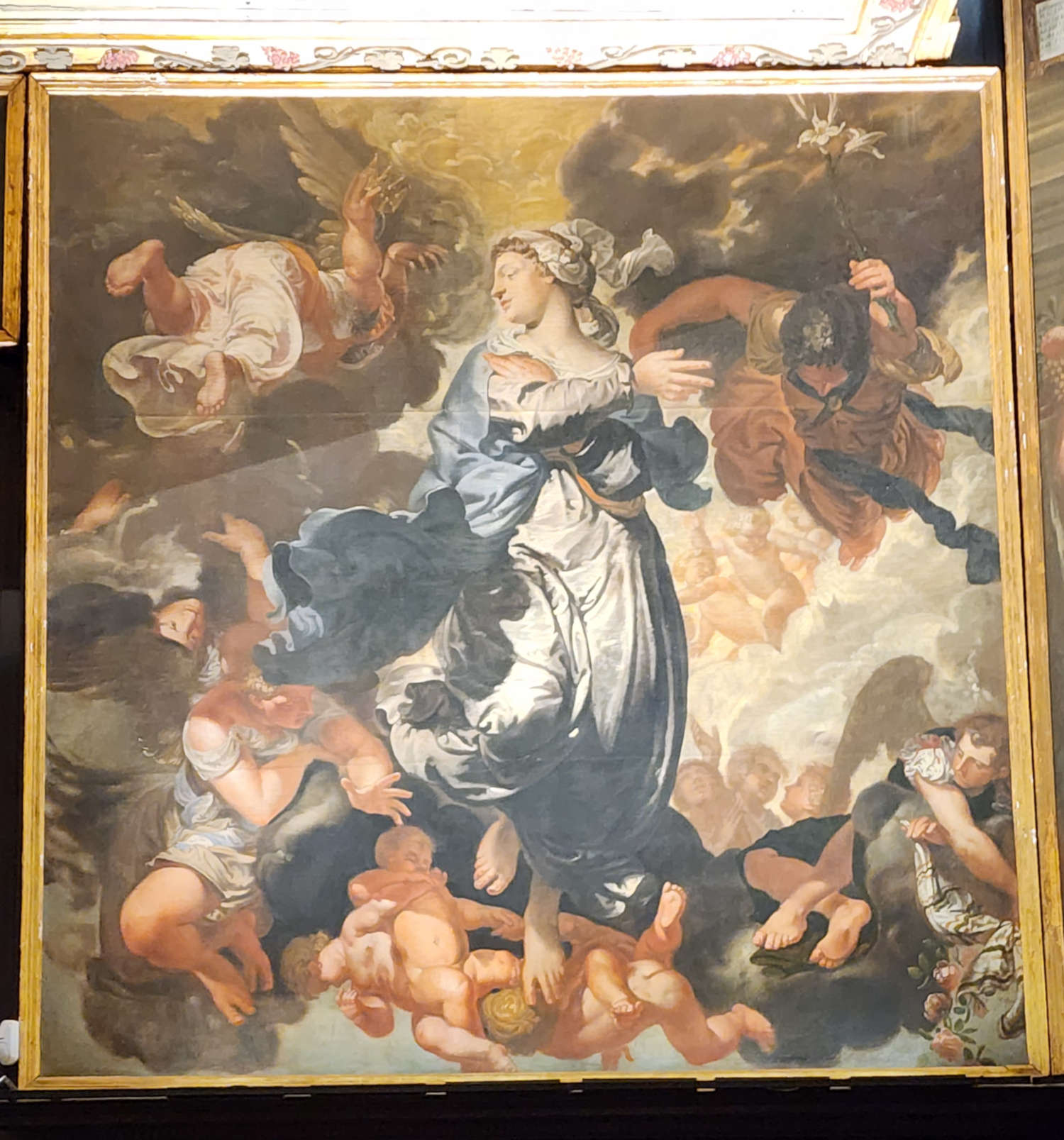
The propagandistic paraphernalia of this celebration aimed to exalt Venice by means of its local administrators, seen as the reliable arms of the Serenissima in the territory, determined to govern Rovigo and Polesine according to the principles that allowed the Republic to dominate by sea and land: on the one hand, then, the tribute to the virtues that guided the action of the podestà, on the other the effects of their good governance, under the blessing of the saints and always having for a background Venice or Rovigo itself, represented with its palaces or personified, as we have seen, while presenting the podestà on duty to the Virgin. The podestà Giovanni Cavalli, for example, is escorted by Justice and Prudence, while his colleague Benedetto Zorzi is surrounded by Abundance, Justice, Virtue, and Prudence, while another quartet, composed of the cardinal virtues, leads the podestà Nicolò Balbi before the Madonna in a painting by an author still unknown. Looking at the consequences of the podestà's action are paintings by Antonio Randa, who depicts Pietro Morosini together with a cornucopia and a crane holding a stone, a symbol of vigilance, and by Francesco Maffei, who imagines Sante Moro together with theAbundance, the allegory of Venice, and a poor man participating in the glorification of the podestà together with the personification of Love for the poor, while the allegory of Virtue is driving out vice. There was also no shortage of podestas who intended to demonstrate their power by having themselves painted together with figures that recalled the territories they administered: thus Andrea Celesti presents podestà Giovanni Giustiniani together with the four rivers that flow through Polesine, namely the Po, Adige, Adigetto and Tartaro-Canalbianco. And over the years, this celebration, while maintaining a remarkable aesthetic hold, while retaining that balance that makes the whole apparatus look to us as if it had been painted within a short time, has been declined in the most diverse ways: here then are the tenebrist meditations of Pietro Ricchi, the Baroque richness of Pietro Liberi, the crepuscular neo-cinquecentism of Antonio Zanchi, the swirls of clouds of Francesco Maffei, the emphatic and festive movement of Coli and Gherardi. All people who, perhaps, had more faith in art than in the power that commissioned the canvases.
Rovigo all had to feel active, a participant in the construction of a kind of Venice on the mainland: this is how the city of roses was to appear to anyone who entered here. With, of course, all the limitations of a highly centralized political system, where the rulers were an elite who handed down their positions from generation to generation, where the distance between power and the population was enormous. Scholar Mariangela Bordin has noted how, in most of the paintings, the only two buildings that are always represented where the outline of Rovigo is glimpsed are the castle and the Rotunda itself, called to the symbolic function of a sacred and civic place in which the whole community recognizes itself, under the protection of the rescuing Madonna, who holds in her hands the flower symbol of the city. A symbol, exactly like the church: one might add that, perhaps, even the shape of the church itself might have been decided to convey to the population a sense of firmness, of solidity, of stability, since from the very beginning, from the foundation it must have been well accepted that the Rotunda would be the temple of all the people of Rovigo, built thanks also to their generosity. And one could also venture that evidently, in the free Republic of Venice, struck by the interdict in the very year in which the construction of the Rotunda was being completed in Rovigo, it was clear from the very beginning that the temple of the community was not to be a separate body. Of course: it will be said that the podestas are in any case all kneeling before the mother of God, that in all the canvases the people of Rovigo are not even considered, that the city government had appropriated a cult born as a result of popular spontaneity, and that the community is not represented except through those who had been delegated to represent it, and moreover not because they were wanted by the citizenry, but because they were the expression of an oligarchy and moreover chosen by a body, the Maggior Consiglio, of which they were part by hereditary right. And today it seems to us undoubtedly contradictory to celebrate community by means of the magnificence of power. Yet it is in this ambiguity, in this interweaving of faith and power, that the Rotunda of Rovigo finds its deepest meaning. And it was so much for those times: in the whole territory that belonged to that Serenissima that in the seventeenth century fought against the Church and gave so much welcome to those who were persecuted by the ecclesiastical authority, there is no sacred place where the affirmation of a


